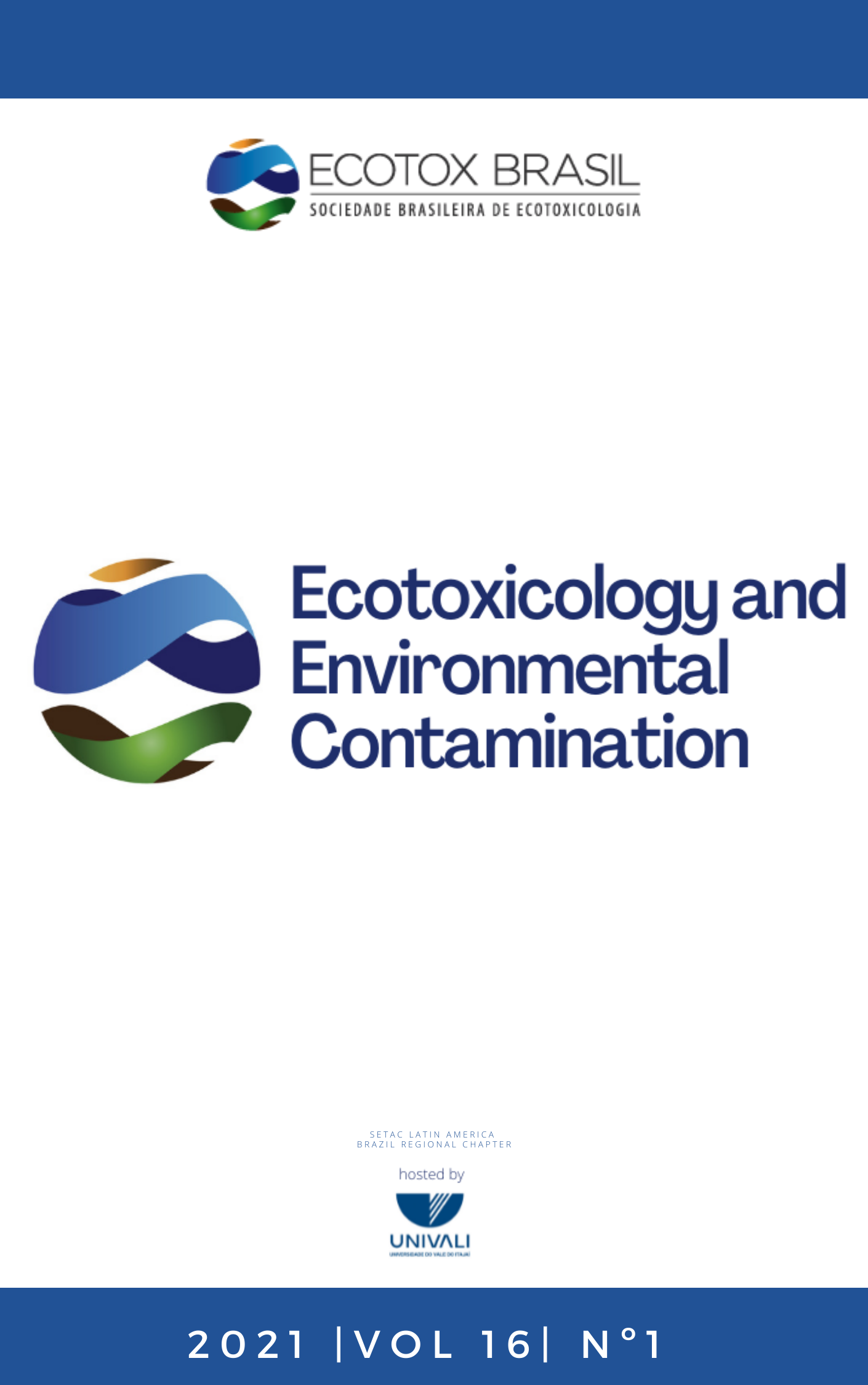Dichlorvos and Paraquat induced spatial avoidance response: A more realistic determinant of population decline of Oreochromis niloticus
DOI:
https://doi.org/10.5132/eec.2021.01.04Abstract
The present study evaluated the ability of Dichlorvos and Paraquat to provoke avoidance response in fingerlings of Nile tilapia Oreochromis niloticus and estimate the population immediate decline (PID). The non-forced multi-compartmented system used for non-forced assays, were constructed to allow free movement of fishes along six compartments. Fishes (n=3 per compartment/treatment, totaling 18 per system) were exposed to a gradient of Dichlorvos (1.0, 2.0, 4.0, 5.0 and 6.0 mg L-1) and Paraquat (10.0, 30.0, 50.0, 70.0, 100.0 mg L-1) and their distribution were recorded at 20 min interval for a 3-h period. Mortalities recorded in forced exposures were 17% and 0% at lowest concentrations and, 67% and 83% at highest concentrations for Dichlorvos and Paraquat correspondingly. For non-forced exposure, fishes presented a significant (p < 0.005) gradient-dependent spatial avoidance for both pesticides after 3-h. They avoided the lowest concentrations of Dichlorvos and Paraquat (1.0 and 10.0 mg L-1) by 40% and 90% respectively and 100% at the highest concentrations for both pesticides. The PID was driven by avoidance behavior rather than mortality. This result indicates that the dangers of pesticide contamination is not only in their toxicity to organisms, but also, in habitat selection processes by organism resulting in serious environmental turbulence.Published
How to Cite
Issue
Section
License
Copyright (c) 2021 Ecotoxicology and Environmental Contamination

This work is licensed under a Creative Commons Attribution 4.0 International License.
Copyright © 2006 ECOTOX-Brasil
Copyright notice: It is a condition for publication that manuscripts submitted to this journal have not yet been published and will not be simultaneously submitted or published elsewhere. By submitting a manuscript, the authors agree that copyright for their article is transferred to the Sociedade Brasileira de Ecotoxicologia (ECOTOX-Brasil) if and when the article is accepted for publication. The copyright covers the exclusive rights to reproduce and distribute articles, including reprints, photographic reproductions or any other reproduction of a similar nature, including translations. No part of this publication may be reproduced, stored in a retrieval system or transmitted in any form or by any means, electronic, mechanical, photocopying, recording or otherwise, without permission of the publisher.
Notice: While every effort is made by the EEC, editors and editorial board to see that no inaccurate or misleading data, opinions or statements appear in this journal, they wish to make it clear that the contents of the articles and advertisements published herein are the sole responsibility of the contributors or advertisers concerned. Accordingly, the EEC, the editorial board and editors and their respective employees, officers and agents accept no responsibility or liability whatsoever for the consequences of any inaccurate or misleading data, opinion or statement.




